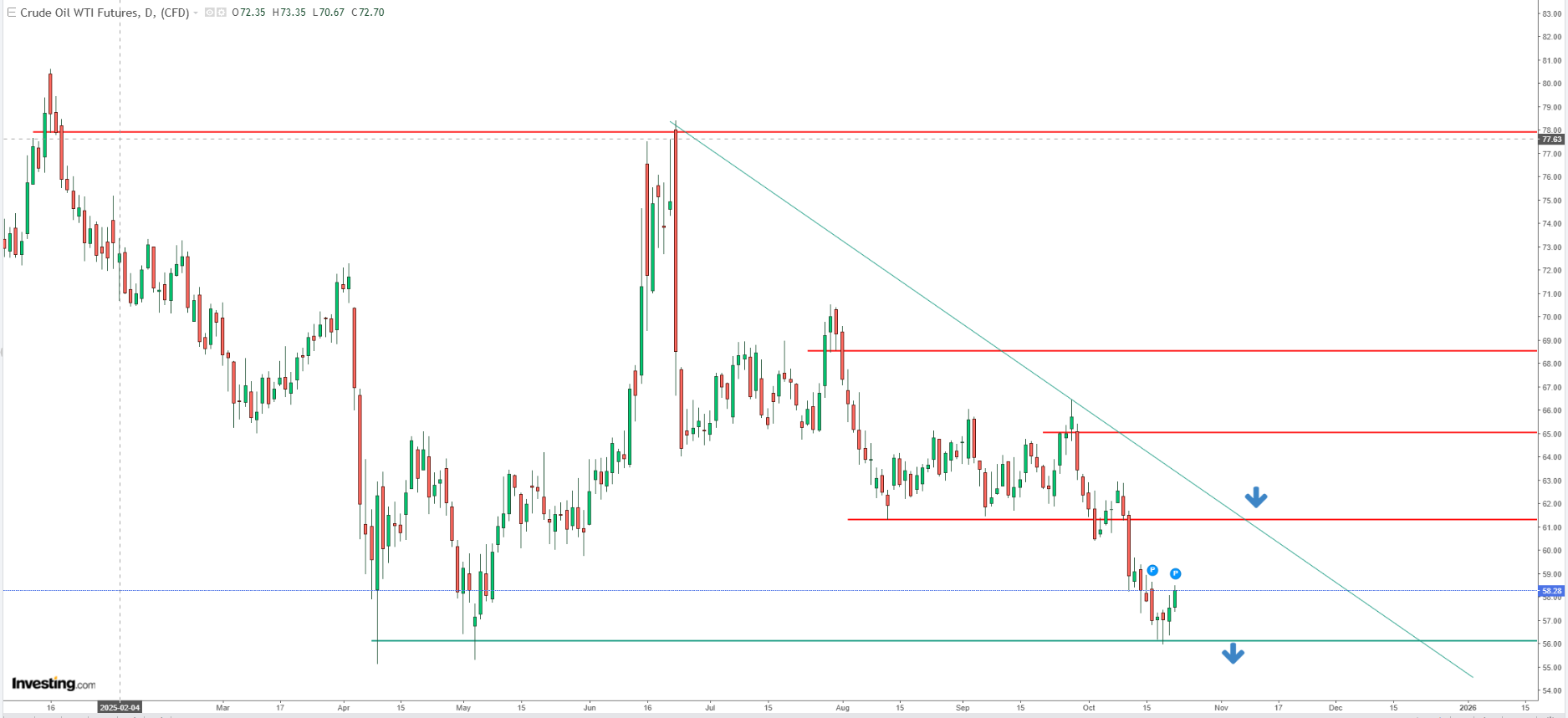
- WTI tests this year’s lows near $55–56, with further declines possible.
- Record oversupply risks and weaker demand from US-China trade tensions weigh on prices.
- Resistance at $61 per barrel may trigger a short-term technical rebound if broken.
- Looking for actionable trade ideas to navigate the current market volatility? Subscribe here to unlock access to InvestingPro’s AI-selected stock winners.
WTI oil futures, having broken the $60-per-barrel level, is now testing this year’s lows, with a further drop becoming the base scenario. The market seems to discount pro-growth factors such as attacks on Russian refineries and US pressure on India to halt Russian crude imports.
The main driver of the decline is the International Energy Agency’s forecast of record oversupply next year. If the US and China fail to reach a trade agreement, oversupply could worsen due to weaker demand. Additional downward pressure may come from the , which appears likely to cut interest rates further in the coming months.
Will Record Global Oversupply Become Reality?
The International Energy Agency forecasts a potential record oversupply of up to 4 million barrels per day next year. In response, OPEC+ opted for a modest production increase of 137,000 barrels per day, well below the expected 500,000 barrels. Despite this, investors continued selling, partly due to developments in China.
In September, China processed 62.7 million tons of crude—the highest in two years—and imported 570,000 barrels above its immediate needs. Additionally, official purchases from Iran increased. These moves suggest Beijing may be preparing for potential disruptions in global supply chains amid the ongoing trade tensions. Higher trade barriers could further reduce demand, and with little prospect of a comprehensive agreement soon, this scenario is becoming increasingly plausible.
India Under Pressure From US on Russian Imports
On the geopolitical front, Donald Trump has claimed that India will stop buying Russian oil, though Delhi authorities have yet to confirm this. If India continues its purchases—as the market currently seems to anticipate—this potential boost to prices would be negated.
Investors are also monitoring intensified attacks on Russia’s energy infrastructure, which could reduce capacity by up to 40%. Adding to the pressure, the US Federal Reserve is expected to cut interest rates by at least 50 basis points over the next two meetings, creating a market environment that favors sellers.
Technical Correction on WTI Oil?
The year’s low, formed around $55–56 per barrel, represents a key support level, as evidenced by the initial demand response. Despite ongoing supply pressures that could eventually push prices toward $50 per barrel, there remains the potential for a technical rebound before that decline occurs.

In this scenario, the convergence of the downward trend line and resistance near $61 per barrel is significant. A breakout above this level would, at least in the short term, invalidate the downward trend.
****
InvestingPro provides a comprehensive suite of tools designed to help investors make informed decisions in any market environment. These include:
- AI-managed stock market strategies re-evaluated monthly.
- 10 years of historical financial data for thousands of global stocks.
- A database of investor, billionaire, and hedge fund positions.
- And many other tools that help tens of thousands of investors outperform the market every day!
Not a Pro member yet? Check out our plans here.
Disclaimer: This article is written for informational purposes only. It is not intended to encourage the purchase of assets in any way, nor does it constitute a solicitation, offer, recommendation or suggestion to invest. I would like to remind you that all assets are evaluated from multiple perspectives and are highly risky, so any investment decision and the associated risk belongs to the investor. We also do not provide any investment advisory services.
